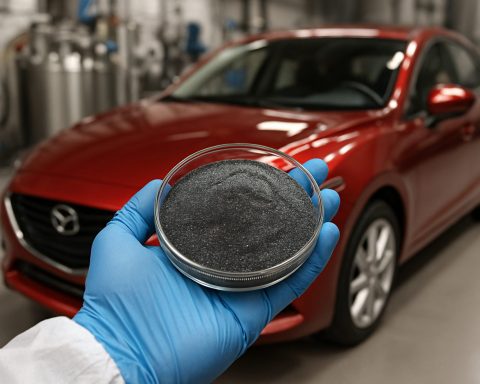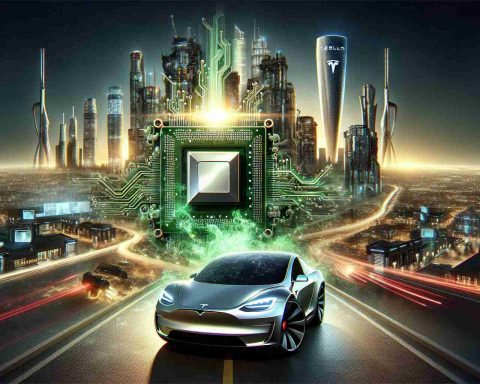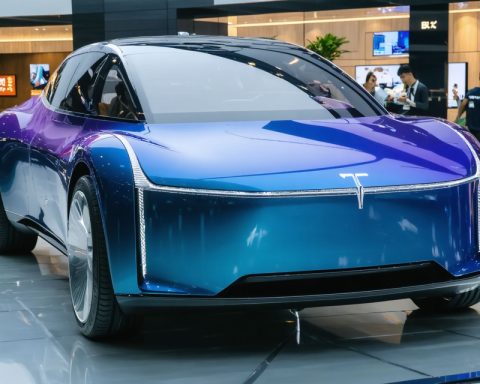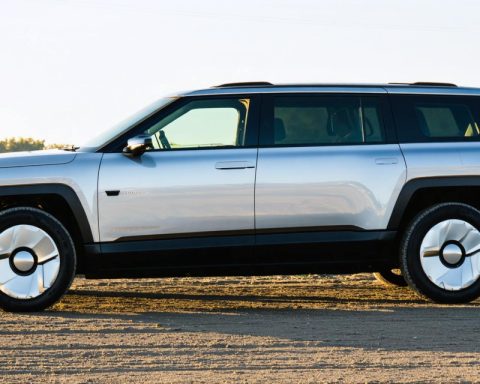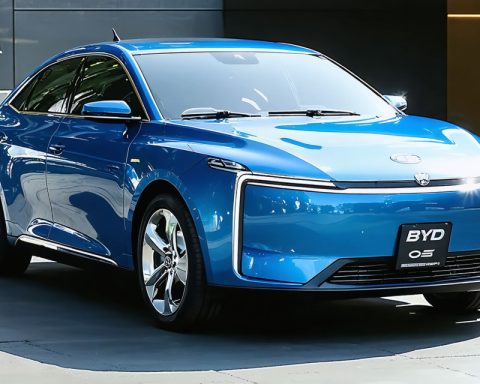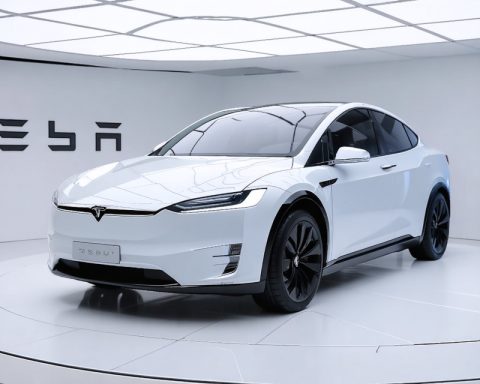- The global composite EV battery enclosures market is projected to grow at 23.5% annually, reaching US$ 5.0 billion by 2030.
- Battery Electric Vehicles (BEVs) lead the market due to their eco-friendly advantages and government subsidies, contrasting with Hybrid Electric Vehicles (HEVs).
- The infrastructure for EV charging stations is rapidly expanding, supporting widespread adoption of electric mobility.
- Passenger cars are key to market growth, driven by environmental awareness and government incentives.
- China is a leader in EV battery enclosure production and innovation, with significant contributions from major OEMs and manufacturers.
- Composite materials are favored for their lightweight and sustainable properties, featured in key EV models like the Chevy Bolt and BMW i3.
- The market represents a shift towards sustainable transportation, encouraging investment and innovation in eco-friendly technologies.
The hum of progress fills the air, as the global composite EV battery enclosures market is on a trajectory of remarkable growth. Projected to swell at an annual rate of 23.5%, this burgeoning sector is expected to reach a dazzling US$ 5.0 billion by 2030. The world of electric vehicles (EVs) is rapidly evolving, driven by a fervent quest for sustainability and technological innovation.
Riding the Green Wave
A deeper dive into the propulsion types reveals that Battery Electric Vehicles (BEVs) are set to maintain their dominance. Unlike their Hybrid Electric Vehicle (HEV) counterparts, BEVs boast a greater eco-friendly promise, emboldened by a rush of investments. Governments worldwide are passionately doling out subsidies to encourage the shift from gasoline engines, making BEVs an increasingly accessible and attractive choice for consumers. Meanwhile, the infrastructure for charging stations is mushrooming, illuminating a future where electric mobility is not just possible but inevitable.
Revving Up the Revolution
When we consider vehicle types, passenger cars emerge as the cornerstone of the market’s expansion. This segment’s ascension is fueled by a growing environmental consciousness among consumers and a cascade of government incentives. Picture bustling cityscapes of tomorrow, humming with electric vehicles quietly whisking millions to their destinations without the pollution and clatter of internal combustion engines.
The Eastern Powerhouse
Zooming in geographically, China stands out as the leviathan of opportunity in this arena. With a roster of major Original Equipment Manufacturers (OEMs) like BYD and SAIC Motors, China not only leads in production but also in innovation, setting the tone for the global marketplace. A strategic concentration of manufacturers such as STS Group and Teijin Automotive Technologies underscores China’s pivotal role as the epicenter of EV battery enclosures. Yet, North America and Europe are not far behind, responding to stringent environmental regulations with robust investment and innovation, making them formidable players in the global narrative.
A Composite Future
The allure of composite materials lies in their uncanny ability to blend lightweight strength with affordability and sustainability. Key EV models whispering the future, like the Chevy Bolt and BMW i3, have already embraced these enclosures, paving a path for new designs and efficiencies. Automotive titans such as Teijin Automotive Technologies and SGL Carbon are leading the charge, pushing the boundaries of what’s possible in material science.
A Market of Undiscovered Potential
The burgeoning composite EV battery enclosures market is not just about numbers and growth rates; it’s about a paradigm shift. The industry stands at the cusp of a revolution, promising enhanced performance, environmental stewardship, and a reimagining of how we envision transport. As these trends continue to accelerate, they offer a clarion call for businesses and consumers alike to embrace cleaner, smarter, and more sustainable modes of transportation.
This sector urges investors, innovators, and enthusiasts to engage with the promise of a sustainable future, where every drive inches us closer to harmony with our planet.
The Rise of Composite EV Battery Enclosures: A Deep Dive into the Future of Electric Mobility
With the global composite EV battery enclosures market expected to reach a staggering $5.0 billion by 2030, the electric vehicle (EV) industry is on the brink of monumental transformation.
Why Composite Materials Are the Future
Composite materials are revolutionizing the EV landscape due to their lightweight yet durable properties. They enhance vehicle efficiency, which translates into longer battery life and extended driving ranges. Key players like Teijin Automotive Technologies and SGL Carbon are pushing boundaries, leading to significant advancements in material sciences.
The Growth of BEVs over HEVs
Battery Electric Vehicles (BEVs) continue their march toward dominance. Unlike their Hybrid Electric Vehicle (HEV) counterparts, BEVs are fully electric, offering a cleaner, more eco-friendly alternative. This shift is heavily incentivized by government subsidies and a rapidly expanding network of charging stations, which are key to mainstream adoption.
Market Opportunities and Trends
1. Geographical Leaders: China is a powerhouse, with companies such as BYD and SAIC Motors leading global production. However, Europe and North America, driven by stringent environmental policies, are also significant contributors to market evolution.
2. Passenger Cars in Focus: The passenger car segment is a major growth driver in this market. Increasingly conscious consumers and government incentives are creating a favorable environment for electric passenger vehicles’ adoption.
3. Technological Innovations: Investment in innovation is leading to new design efficiencies and sustainable practices, promising a cleaner future for transportation.
Pressing Questions and Insights
What Are the Key Advantages of Composites in EVs?
– Weight Reduction: Lighter vehicles require less energy, boosting the overall efficiency of electric cars.
– Corrosion Resistance: Composites offer superior durability compared to traditional materials.
– Cost-Effectiveness: As technology advances, the initial high costs of composites are expected to decrease, making them more accessible.
What Challenges Does the Composite Market Face?
– Manufacturing Costs: Despite efficiency improvements, composite materials can still be costly to produce. Research into more affordable production methods is crucial.
– Technical Complexity: The integration of composite materials requires advanced engineering and design expertise.
Market Forecast and Sustainability
According to industry trends, the demand for more sustainable practices will likely spur further innovations in composite materials. This sector’s potential to meet emissions targets makes it an attractive prospect for future investments and partnerships.
Sustainability Focus: Reducing carbon footprints and transitioning to sustainable materials are central to the EV industry’s progression.
Actionable Recommendations
1. Investment in Charging Infrastructure: Expand and enhance the availability of charging stations to facilitate BEV adoption.
2. Focus on Innovation and R&D: Further investment in research can reduce costs and improve the sustainability of composite materials.
3. Engagement in Policy Advocacy: Work with governments to shape favorable policies that support the electric mobility shift.
In conclusion, the burgeoning composite EV battery enclosures market is forging a path towards a more sustainable and efficient transportation future. Stakeholders in this field must continue to innovate and adapt to maintain this growth trajectory. For more insights into the electric vehicle industry and its related technologies, visit BYD or Teijin Automotive Technologies.






